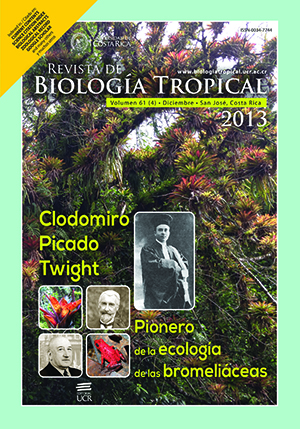Abstract
Roads directly or indirectly affect the structure, dynamics and function of ecosystems that they traverse. Most studies on the effect of roads on wildlife focus on the evaluation of mortality of vertebrates by vehicle collisions. Despite the extensive road network that exists in Venezuela, studies of wildlife mortality in them are scarce. In this paper, we analyzed the temporal and spatial pattern of vertebrate’s collisions along the road Guanare-Guanarito, in Portuguesa state. We travelled 26 times between these towns (74km) to localize dead vertebrates, at a speed of 50-60km/h. of those trips were conducted from March 13 to October 26, 2010, and 10 additional trips from December 7, 2009 to December 14, 2010; these ones, with the aim to include months and seasons that were insufficiently sampled during the first period. The elapsed time between trips varied from 14 to 37 days. The total distance traveled was 1 924km. Dead animals found amounted 464 individuals, 66 of them were birds (25 identified species), 130 mammals (15 species) and 268 reptiles (18 species). The species with the highest number of individuals were the snake Leptodeira annulata (n=119), the oppossum Didelphis marsupialis (n=39) and the spectacled caiman Caiman crocodilus (n=33). Excluding domestic animals, the rate of road-killed vertebrates was 0.2282indiv./km, a figure 28.3% higher than previous studies in the same road. Changes in the relative number of collisions for some species, respect to the numbers reported 20 years ago, were linked to the increase in traffic flow and changes in land use. Road segments with collision rates higher than expected by chance were identified. Collition by cars may be the principal cause of mortality for species like the tamandua (Tamandua tetradactyla) and the giant anteater (Myrmecophaga tridactyla), the last considered a vulnerable species. Some basic measures are proposed to reduce wildlife mortality on the road.Comments
Downloads
Download data is not yet available.






